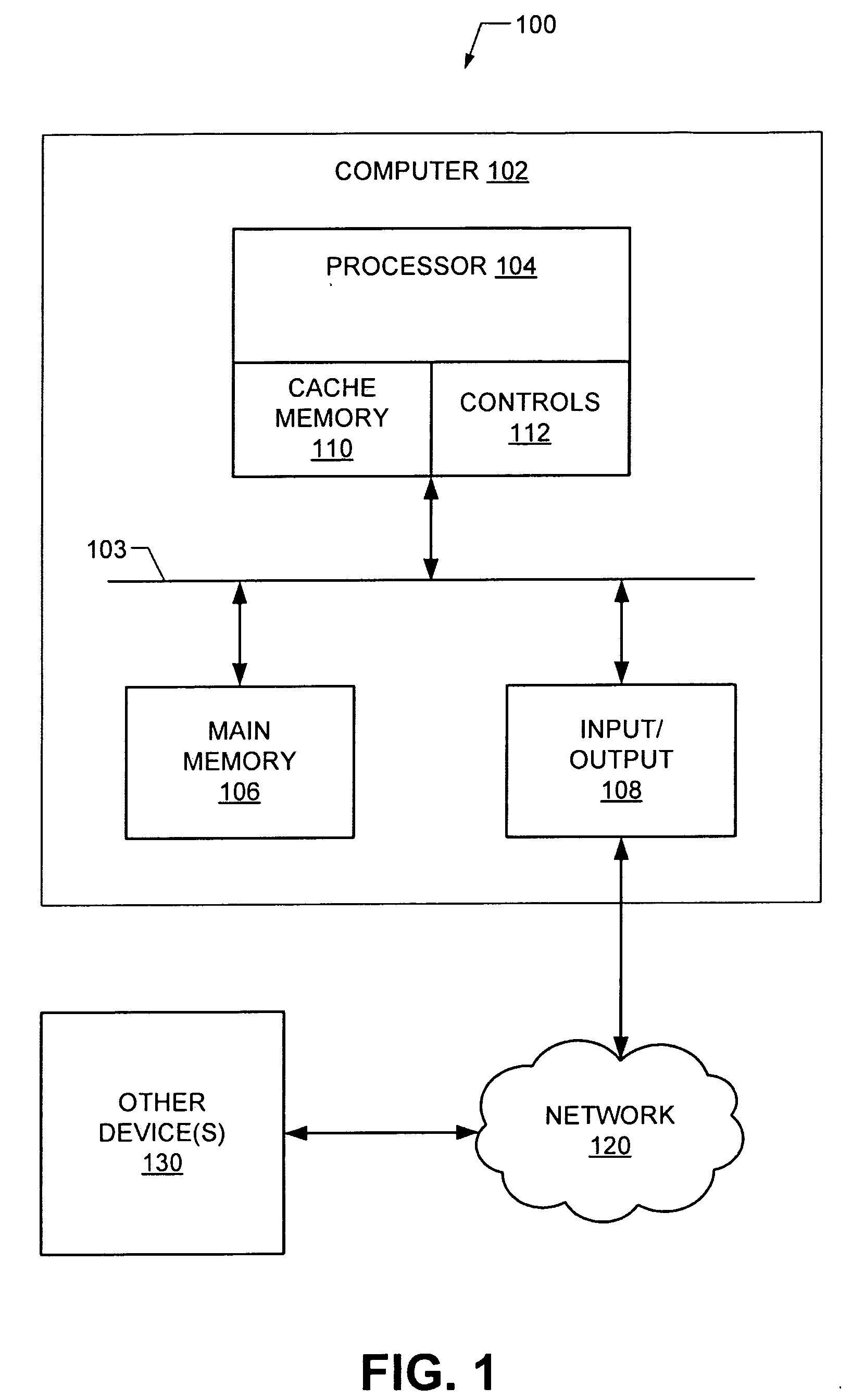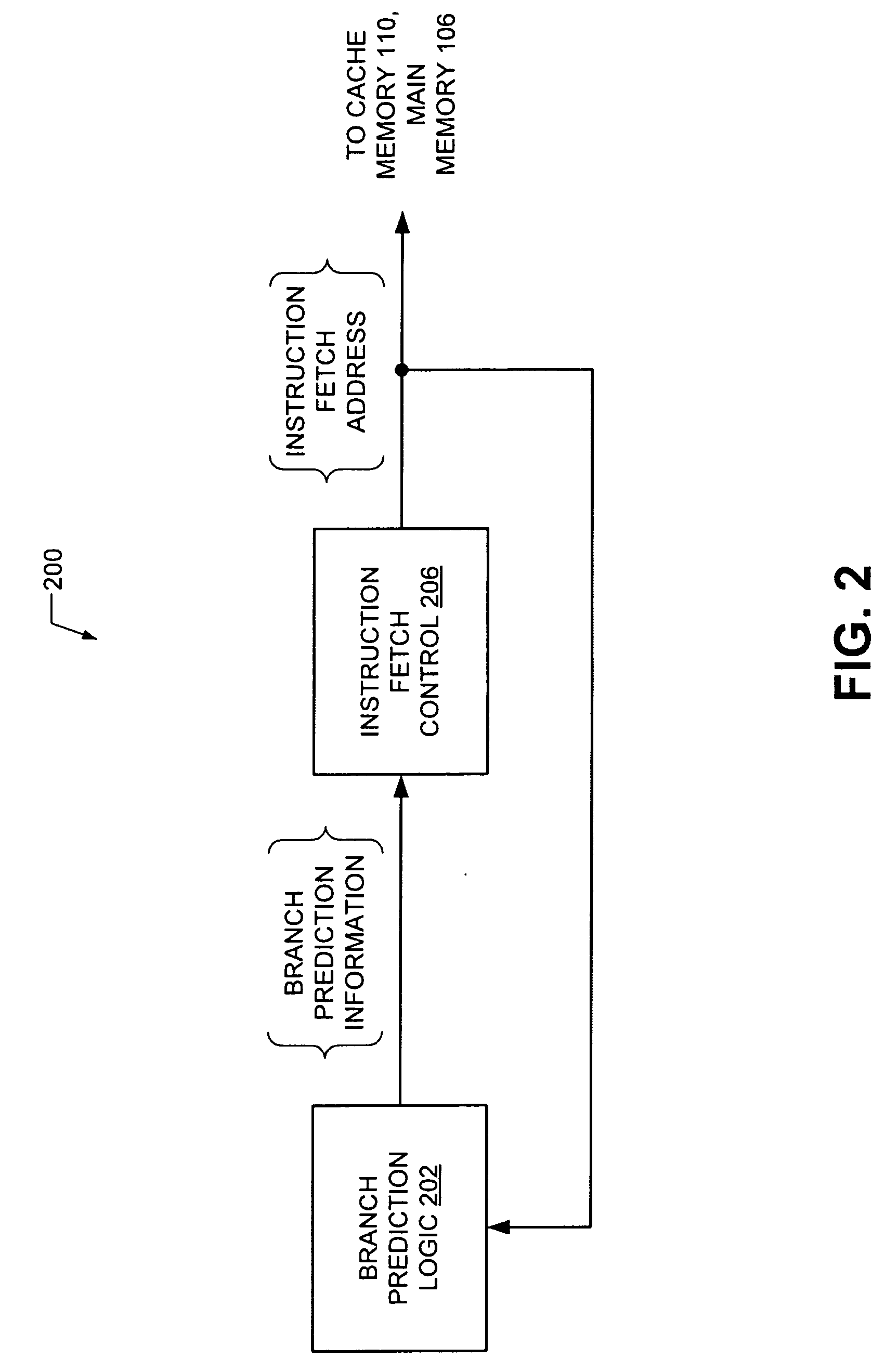Method, system, and computer program product for reducing cache memory pollution
a cache memory and memory pollution technology, applied in the field of computer processor operation, can solve the problems of ensuring that prefetched data will be used by the processor, and the processor is subject to the latency of accessing the memory for the needed data, and achieve the effect of reducing cache memory pollution
- Summary
- Abstract
- Description
- Claims
- Application Information
AI Technical Summary
Benefits of technology
Problems solved by technology
Method used
Image
Examples
Embodiment Construction
[0013]Exemplary embodiments of the invention described herein provide a method, system, and computer program product for reducing cache memory pollution. In accordance with such exemplary embodiments, cache memory pollution, which results from the eviction of useful data from the cache when unneeded data is prefetched, is reduced. Furthermore, the resulting unnecessary usage of system resources to fetch unneeded data is reduced.
[0014]Turning now to the drawings in greater detail, wherein like reference numerals indicate like elements, FIG. 1 illustrates an example of a computer system 100 including an exemplary computing device (“computer”) 102 configured for reducing cache memory pollution. In addition to computer 102, exemplary computer system 100 includes network 120 and other device(s) 130. Network 120 connects computer 102 and other device(s) 130 and may include one or more wide area networks (WANs) and / or local area networks (LANs) such as the Internet, intranet(s), and / or wir...
PUM
 Login to View More
Login to View More Abstract
Description
Claims
Application Information
 Login to View More
Login to View More - R&D
- Intellectual Property
- Life Sciences
- Materials
- Tech Scout
- Unparalleled Data Quality
- Higher Quality Content
- 60% Fewer Hallucinations
Browse by: Latest US Patents, China's latest patents, Technical Efficacy Thesaurus, Application Domain, Technology Topic, Popular Technical Reports.
© 2025 PatSnap. All rights reserved.Legal|Privacy policy|Modern Slavery Act Transparency Statement|Sitemap|About US| Contact US: help@patsnap.com



